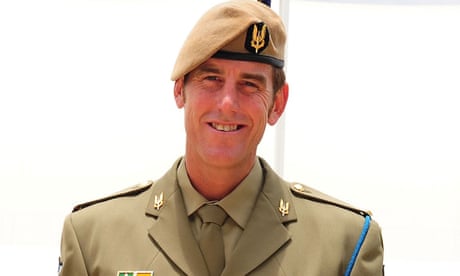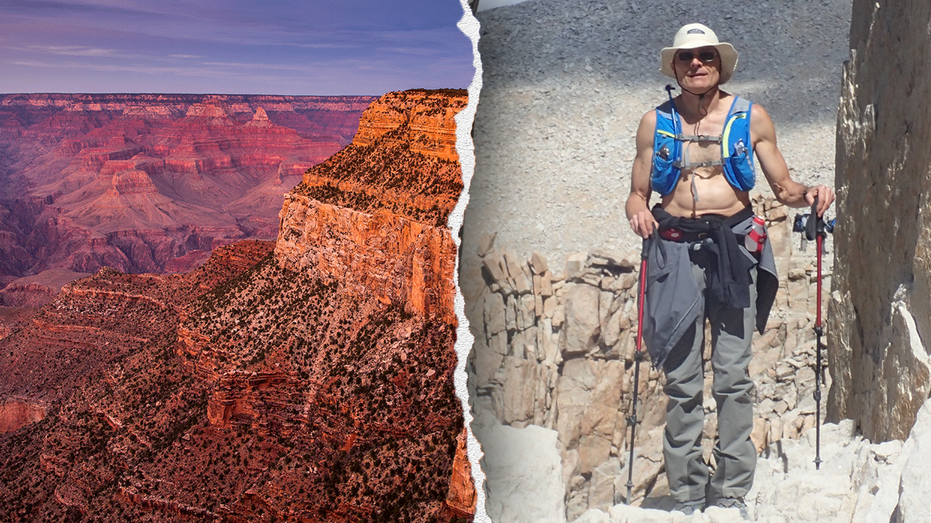- by foxnews
- 23 May 2025
Ben Roberts-Smith: a war hero’s reputation at stake in Australia’s defamation ‘trial of the century’
Ben Roberts-Smith: a war hero’s reputation at stake in Australia’s defamation ‘trial of the century’
- by theguardian
- 04 Jun 2022
- in news

A decade out of the military, Ben Roberts-Smith looks still every inch the archetypal soldier.
Just shy of two metres tall, straight-backed and powerfully built, the former Australian SAS corporal marches purposefully each morning up the federal court steps in Sydney, clean shaven and hair immaculately swept.
Each morning he takes the same seat, an impassive observer as brutal allegations, touching every element of his life, are pored over in excoriating detail.
Roberts-Smith, a recipient of the Australian military's highest honour, the Victoria Cross, is suing three newspapers over a series of reports he alleges are defamatory and portray him as committing war crimes, including murder.
The newspapers are defending their reporting as true. Roberts-Smith denies any wrongdoing.
Before its start, the defamation case brought by Roberts-Smith was billed variously as the trial of the century, a proxy war crimes trial, and a public examination of Australia's two-decades long war in Afghanistan. It has been all of those things.
The hearings have so far lasted 99 days, at an estimated cost of A$25m (�14.5m). With cross-examination of witnesses finally complete, the court will now break until 18 July before final submissions from each side, and then a wait of many months for a verdict.
The evidence has been unlike anything ever heard in an Australian court.
Serving soldiers have testified that they saw their comrades murder innocent people.
Three soldiers have refused to testify as to what they did in Afghanistan: for two of them to do so, their lawyers told the court, would be to admit to murder.
It has pitted comrades against each other: former best friends who have given irreconcilable evidence.
The spiteful factionalism within Australia's usually secretive SAS regiment, supposedly the country's elite war-fighting unit, has been laid bare in public view.
Former and serving government ministers have appeared in court on opposite sides, telling the judge Roberts-Smith was either an "immensely courageous" and admirable man, or, alternatively, someone to be "pitied", whom the country could "no longer be proud of".
Witnesses have admitted under oath they remain under active investigation for other war crimes; others have conceded they drank alcohol from a prosthetic leg taken from a slain man as a ghoulish trophy of war.
The case has drawn in government departments and pitched two of Australia's media empires in scarcely concealed battle. Two of the newspapers defending the defamation claim are owned by television station Channel Nine. Roberts-Smith's benefactor, backer and employer is media baron Kerry Stokes, chairman of Nine's key competitor, Channel Seven.
Stokes, an avowed military buff and supporter of the SAS, has bankrolled the suit, at a cost of millions of dollars. It was also revealed in court that Channel Seven was paying the legal bills of Roberts-Smith's friends who were called as witnesses.
Roberts-Smith, for his part, has offered up his Victoria Cross as collateral. He will surrender the medal if he loses this case.
The country's most famous soldier of a generation faces the most serious allegations imaginable: that he murdered six people while serving in the Australian military.
Two incidents have dominated the evidence before the court.
The first, from April 2009, concerns an SAS raid on a compound in the southern Afghan village of Kakarak, codenamed Whiskey 108. It is alleged that two men, one elderly and one with a prosthetic leg, surrendered after they were discovered hiding in a crude tunnel.
A serving SAS soldier told the court that the old man was executed by a trooper on his first deployment - anonymised before the court as Person 4 - on the orders of Roberts-Smith and his patrol commander.
The soldier testified Roberts-Smith and Person 4 asked to borrow the suppressor from his weapon, before Roberts-Smith pushed the old man to his knees in front of Person 4.
The soldier told the court when he realised what was about to happen, he stepped into a neighbouring room to avoid witnessing the execution. He said he heard a muffled shot, and stepped back into the courtyard to see Person 4 standing above the elderly Afghan man, dead from a bullet wound to the head.
In the witness box, Person 4 refused to answer questions about the mission "on the grounds of self-incrimination". The court was told if he were to "give evidence in accordance with his outline of evidence in relation to events at Whiskey 108, he will be admitting to murder".
The man with the prosthetic leg was allegedly "frog-marched" outside the compound by Roberts-Smith. Three soldiers have told the court they saw Roberts-Smith, or a soldier matching his description and carrying his distinctive weapon, throw the man to the ground and machine-gun him to death.
"He then proceeded to throw the Afghan male down on to the ground," one soldier told the court. "Then I observed him lower his machine gun and shoot approximately three to five rounds into the back of the Afghan male.
"After he'd done that, he looked up and saw me standing there, and looked at me and said 'are we all cool, we good?'"
Another soldier told the court he believed Roberts-Smith killed the man as an "exhibition execution".
Roberts-Smith told the court the allegations could not be true because no one was found in the tunnel. Four times he told the court: "there were no men in the tunnel".
Roberts-Smith testified he killed the man with a prosthetic leg, whom he discovered running and armed, outside the compound. The man was an insurgent, lawfully killed within the laws of war, he said.
The elderly man, Roberts-Smith told the court, was killed by another Australian soldier, unknown to him, but whom he credits with saving his life.
Five SAS colleagues, including the man who went into the tunnel, have backed his version of events.
The second major allegation concerns the death of a farmer named Ali Jan, detained in the village of Darwan in September 2012.
Roberts-Smith is alleged to have marched him, bound in handcuffs, to the edge of a cliff about 10 metres high that ran down to a dry creek bed.
Two relatives of Ali Jan have told the court they saw "the big soldier" kick Ali Jan off the cliff. An Australian soldier has told the court he saw Roberts-Smith kick the prisoner.
"I saw the individual smash his face on a rock, and I saw the teeth explode out of his face," Person 4, the same soldier from Whiskey 108, testified.
The court was told Ali Jan tried to sit up before slumping back down.
Roberts-Smith is alleged to have ordered two soldiers - Person 4 and Person 11 - to drag the badly injured man into a cornfield and shoot him.
Person 4 testified he saw, but did not hear, a conversation between Roberts-Smith and Person 11. He heard "two or three rounds" fired from a suppressed M4 rifle and turned to see Person 11 with his weapon lifted to his shoulder "still in a position to shoot". The detained Afghan man lay dead on the ground.
A radio, taken from another man killed earlier in the mission, was allegedly planted on his body.
In his evidence, Roberts-Smith denied the allegation, and said the killing could not have happened as alleged, because "there was no kick, there was no cliff".
He said the man was a "spotter" - a scout for enemy insurgents - discovered hiding in the cornfield as the troops walked towards their helicopter extraction point. The man was carrying the radio when he defied an order to stop and was engaged and killed, Roberts-Smith told the court. He said the man was a threat to Australian troops, a legitimate target lawfully killed.
His version of events was backed by Person 11: "I saw this person carrying a radio, which led me to make the assessment that this was a spotter," Person 11 told the court. "I assessed this person posed a direct threat to the extraction of our forces so I engaged."
A raft of other incidents, including the reported point-blank execution of a teenager pulled from a vehicle, and the ordering of subordinates to execute prisoners, have also been canvassed in court.
Roberts-Smith has also been accused of bullying comrades, of writing threatening letters to soldiers giving evidence to government inquiries, and of an alleged act of domestic violence, punching a woman with whom he was having an affair. The court has heard of laptops being burnt, of women being filmed in secret, and of evidence being secreted in a child's lunchbox and buried in a suburban back yard.
Roberts-Smith's former wife testified against him, but alluded to the torment the trial has caused, including to the person at its centre, saying: "I hope Ben survives this nightmare."
Roberts-Smith has consistently denied all allegations of wrongdoing.
It has been a vertiginous fall in public standing, a collapse made all the more dramatic by the extraordinary reputation Roberts-Smith once held.
Named chair of the Australia Day Council and Father of the Year, his portrait hung in the country's war memorial, and he had come to represent the virtue of Australia's mission in Afghanistan.
After 93 days of a trial he brought on, the landscape is very different.
Australia has followed the US in a hasty retreat out of Afghanistan, and Roberts-Smith stands publicly accused of brutalities that have shocked and divided the nation.
"The effect of these articles has been to smash and destroy that reputation."
The actions alleged of Roberts-Smith, he said, were those of an "ostentatious psychopath".
"He is not that."
In the background has been the government's investigation into allegations of war crimes.
In 2020, after a four-year investigation, the Inspector General of the Australian Defence Force, Maj Gen Paul Brereton, published a report finding there was credible evidence Australian special forces soldiers were involved in the murder of 39 Afghan civilians.
Brereton, a judge of the New South Wales supreme court, identified 25 alleged perpetrators and described the actions of some as a "disgraceful and profound betrayal" of the Australian military. Criminal charges may still be laid.
Judgment in the defamation trial may be up to a year away, with evidence concluding this week. But it has already laid bare the unremitting violence and uncertainty of Australia's war in Afghanistan, with a tiny cohort of soldiers asked to return again and again to a conflict that increasingly felt purposeless.
Former soldiers, some broken by mental anguish and post-traumatic stress, testified they had served up to 12 deployments.
They told the court of seeing comrades die, and being sent to "hit" insurgent redoubts over and over.
They sought an enemy who melted into the farms and the mountains during winter, only to re-emerge each spring fighting season.
One soldier told the court he resented being subpoenaed to give evidence against his former comrade.
Having testified he witnessed Roberts-Smith execute a disabled, unarmed prisoner, he said: "I still don't agree with the fact BRS [Roberts-Smith] is here, under extreme duress, for killing bad dudes we went there to kill".
McClintock told the court in the trial's opening days that soldiers were sent "to kill the enemy", however distasteful it might seem from a safe distance.
But Nicholas Owens, for the newspapers, told the court soldiers were not free to kill indiscriminately.
Owens said all of those killed in the allegations before the court were civilians or had been captured.
- by foxnews
- descember 09, 2016
United Airlines flight returns to Hawaii after concerning message found on bathroom mirror; FBI investigating
United Airlines Flight 1169 to Los Angeles returned to Hawaii after a "potential security concern" aboard the plane. The FBI and police are investigating.
read more


